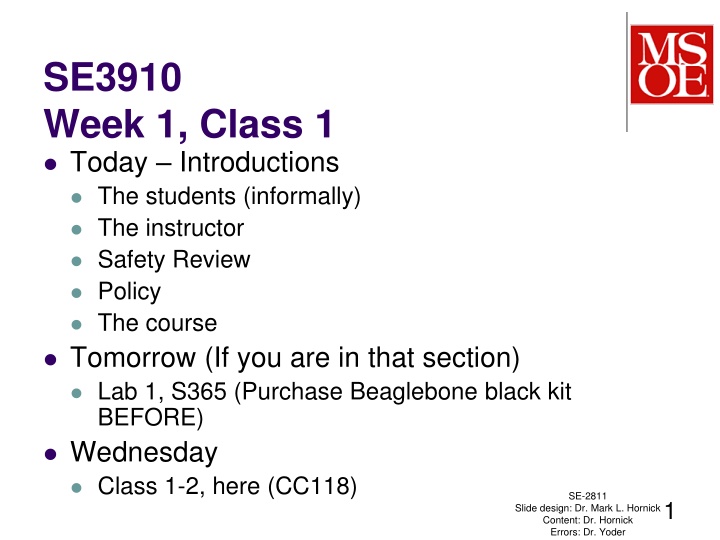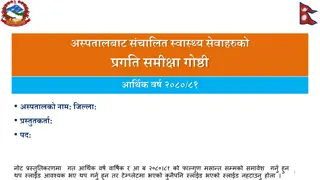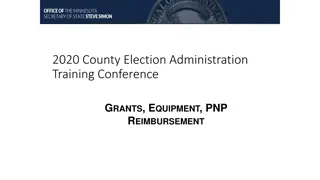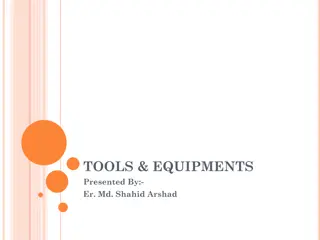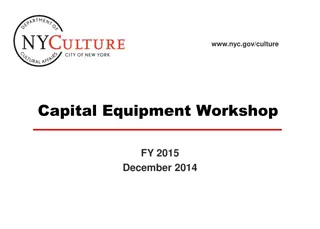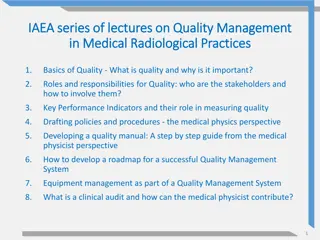SE3910 Week 1 Class 1 - Introductions and Equipment Overview
In today's class, students were informally introduced to the course by the instructor, covering safety policies and the upcoming lab. The course includes diagrams on slide design, equipment purchase recommendations, course overviews, flow examples, and explanations on voltage, current, circuits, and resistance. Additional details cover the Beaglebone Black kit purchase, tools required, and practical applications. Understanding the fundamentals of flow, voltage, current, and resistance is essential for successful completion of the course.
Download Presentation

Please find below an Image/Link to download the presentation.
The content on the website is provided AS IS for your information and personal use only. It may not be sold, licensed, or shared on other websites without obtaining consent from the author.If you encounter any issues during the download, it is possible that the publisher has removed the file from their server.
You are allowed to download the files provided on this website for personal or commercial use, subject to the condition that they are used lawfully. All files are the property of their respective owners.
The content on the website is provided AS IS for your information and personal use only. It may not be sold, licensed, or shared on other websites without obtaining consent from the author.
E N D
Presentation Transcript
SE3910 Week 1, Class 1 Today Introductions The students (informally) The instructor Safety Review Policy The course Tomorrow (If you are in that section) Lab 1, S365 (Purchase Beaglebone black kit BEFORE) Wednesday Class 1-2, here (CC118) SE-2811 1 Slide design: Dr. Mark L. Hornick Content: Dr. Hornick Errors: Dr. Yoder
Equipment Purchase beaglebone black kit (~$65) from Tech Support Used in Lab 2 (Optional) Tools e.g. needle-noise pliers Check out short-term Kit (breakout board, breadboard cape, LCD cape, USB Oscilloscope) Small parts (also may desire to purchase) SE-2811 Dr.Yoder 2
Course Overview (See schedule, take notes) SE-2811 Dr.Yoder 3
Flow Examples For two minutes, write down with your team a list of as many things that flow that you can think of. SE-2811 Dr.Yoder 4
What causes things to flow? For a few examples, let s think about WHY the flow occurs. What makes it flow faster or slower? SE-2811 Dr.Yoder 5
What is Voltage? Suppose I rub my shoes across the floor Voltage is what exists between my finger and the doorknob before I touch it. Does voltage require current to exist? Variable Name: V (Or, rarely, E (electromotive force)) Voltage is measured in Volts (V). We celebrated Alexandra Volta s birthday a few weeks back. 6 SE-2811 Dr.Yoder
What is current? Current is what exists when I touch the doorknob. It is the flow of charge Does current require voltage to exist? Variable name: I Current is measured in Amps. (A) One amp is (for this course) a LOT of current! SE-2811 Dr.Yoder 7
A Very Simple Circuit What is the voltage across the resistor? + + 5V Resistor Power Supply - - SE-2811 Dr.Yoder 8
Resistance Measures how much a device keeps current from flowing through it. More resistance, less current flow. (all other things being equal) The variable name is usually R The units are Ohms ( ) = V/A For the purposes of this class, 1 is very small. Resistance is futile if < 1 (Or even 10 ) SE-2811 Dr.Yoder 9
Resistance V=IR For a given resistor, If current increases, voltage If voltage increases, current For a given voltage, If the resistance increases, the current SE-2811 Dr.Yoder 10
Resistance V=IR Exercise: Suppose we have 3.3V across a 1 Ohm resistor. What is the current through the resistor? SE-2811 Dr.Yoder 11
Power Exercise: How do you compute energy in Physics? What are the units for energy? Exercise: How do you compute power in Physics (excluding electricity?) Write as many examples as you can. What are the WI units for power? How do you computer power in circuits? SE-2811 Dr.Yoder 12
Power Substituting in V=IR, we find Exercise: Find a formula without V. Exercise: For a given resistor, if I double the voltage, how does the power change? http://www.electronics- SE-2811 Dr.Yoder 13
Power Suppose I have a 1 resistor with 3V across it. What is the current through the resistor? What is the power through the resistor? What do you think will happen if the resistor is a Watt resistor? (As many are) SE-2811 Dr.Yoder 14
Cartoon One source: http://www.sengpielaudio.com/calculator ohmslaw.htm SE-2811 Dr.Yoder 15
Review: Voltage & Current What is the voltage across the resistor? + + 5V Resistor Power Supply - - SE-2811 Dr.Yoder 16
Review: Resistance & Power Exercise: According to this answer, 20mA is (possibly) enough to fibrillate your heart. Supposing your internal resistance is 100 , what voltage is needed? Image sources: http://www.electronics- tutorials.ws/resistor/res_7.html http://paperclip.rcs.ac.uk/index.php/Basic_Elect rical_Theory SE-2811 Dr.Yoder 17
Example 1: Open switch Compute all currents & voltages SE-2811 Dr. Yoder 18
Example 2: Closed switch Compute all currents & voltages SE-2811 Dr. Yoder 19
Example 3: Charging a battery If 30mA desired through VL (charging), what should R be? SE-2811 Dr.Yoder 20
Example 4: Powering an LED If 30mA desired through L1 what should R be? (Voltage drop across L1 is 2 V, regardless of current) 21
Exercise: Illustrate two threads running in parallel on a sequence diagram. SE-2811 Dr.Yoder 22
Parallel Resistors Kirchoff s Voltage Law Voltage is between points, regardless of path Kirchoff s Current Law Current splits Series Resistors (Similarly) SE-2811 Dr.Yoder 23
Equivalent Resistance Resistors that are wired in parallel or series behave exactly like their equivalent resistor If we know voltage, can find current If we know current, can find voltage. It can be tricky to recognize parallel and series circuits SE-2811 24 Slide design: Dr. Mark L. Hornick Content: Dr. Hornick Errors: Dr. Yoder
Warning Originally from: http://www.thegooglestory.com/glat.html http://xkcd.com/356/ SE-2811 Dr.Yoder 25
Examples At which dot is the "pressure" (voltage) highest in each circuit? If time: Which circuit draws more current? SE-2811 Dr.Yoder 26
Resistor Limits A resistor follows Ohm s law; V=IR http://physics.stackexchange.com/questions/55 534/physical-interpretation-of-y-intercept-in-a- SE-2811 Dr.Yoder 27
How do resistors fail? They burn up, literally For many resistors, the maximum steady- state generation of heat they can handle is watt Can calculate with P = IV = V2/R = I2R (subbing in V=IR) Ex: Find the minimum W resistance that is safe with a (non-Beaglebone) 3.3 V source? SE-2811 Dr.Yoder 28
How do diodes fail? Same way as resistors they burn up So total temperature is the limiting factor How to determine max V or I? If a voltage is applied across an LED current will flow through the LED The higher the voltage, the more current will flow But this does NOT follow Ohm s Law; V IR SE-2811 Dr.Yoder 29
LED current-voltage curves http://www.ecse.rpi.edu/~schubert/Light-Emitting-Diodes-dot- org/chap04/chap04.htm SE-2811 Dr.Yoder 30
Our mental model(s) for diodes https://www.st- andrews.ac.uk/~www_pa/Scots_Guide/info/c SE-2811 Dr.Yoder 31
LED current and voltage limits So if we apply a voltage higher than the transition Vd to the LED (c), the current will be If we force a current in the 0.5 mA range through the LED (c), the voltage will be Ex: Decide will more likely damage the component? 1 mA or 2V? Explain. SE-2811 Dr.Yoder 32
Selecting an LED resistance value Suppose L1 is a diode with Vd = 1.8 V Ex: Write a formula relating the current through L1 to R1. Ex: Solve for R1 if we want the (max) current to be 10 mA. SE-2811 Dr.Yoder 33
